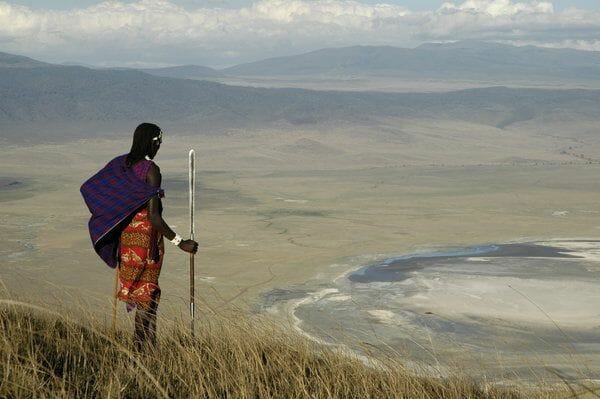
The Ngorongoro Conservation Area is in Northern Tanzania in Arusha region of Ngorongoro district and is managed by the Ngorongoro Conservation Area Authority. It covers an area of 8,292 square Kilometres and was established in 1959 to promote conservation of natural resources, wildlife and promote tourism.
The word Ngorongoro means “gift of life” in Maasai Language. The area is named after Ngorongoro Crater, one of the largest volcanic calderas in the world. The Ngorongoro Crater is also described as the “Africa’s eighth wonder of the world”. The other two craters in this Conservation area are Olmoti and Empakaai.
Ngorongoro Conservation Area also covers Lake Magadi which is alkaline from sodium Carbonate and is a home to hundreds of lesser flamingos. This lake shrinks in dry seasons leaving crystalline salt pans that supplements diet for animals like hyenas, Jackals, and other animals.
About 2 million wildlife species are supported by the Serengeti plains, archaeological site found at Olduvai Gorge, the catchment forest and the Gol mountains that are located northwest of Ngorongoro but still within the boundaries of Ngorongoro Conservation Area. The conservation area also boasts of the Engare Sero Footprint site which is the largest among human fossil footprints that has ever been discovered in Africa. Because of the harmonious co-existence between people and wildlife, the UNESCO’s Man and Biosphere Reserve Programme named the Ngorongoro Conservation Area a world Heritage Site.
Species diversity:
Ngorongoro Conservation Area hosts wildebeests, grant’s gazelles, and plain zebras. Lions, leopards, cheetahs, and spotted hyenas also call this area their home. The endangered animals like black rhinoceros and the African wild dog can be seen. There are over 400 species of birds like superb starlings, lesser flamingos, black kite, silvery-cheeked hornbills, and black-winged lapwing in this area.
Size and accessibility:
It covers an area of 8,292 Square Kilometres
Ngorongoro Conservation Area mainly the Ngorongoro crater can be accessed by both road and air transport
By car:
The Conservation area can be accessed by driving from either Arusha or Moshi town.
The drive is about 3 to 4 hours from Arusha town and 5 to 6 hours from Moshi Town
By air:
The driving distance from Arusha can be cut short by opting for a flight from Arusha or Kilimanjaro International Airpot to the Airstrips near the crater.
Activities:
Game Drives
Experience Ngorongoro Crater
Birding
Visit a Maasai Village
A tour to lake Magadi the home of lesser flamingos
Visit Empaakai Crater
Farm visits
Visit the archaeological site (Olduvai Gorge)
Contact Us
We respond to all inquiries within 2 business days.
"*" indicates required fields